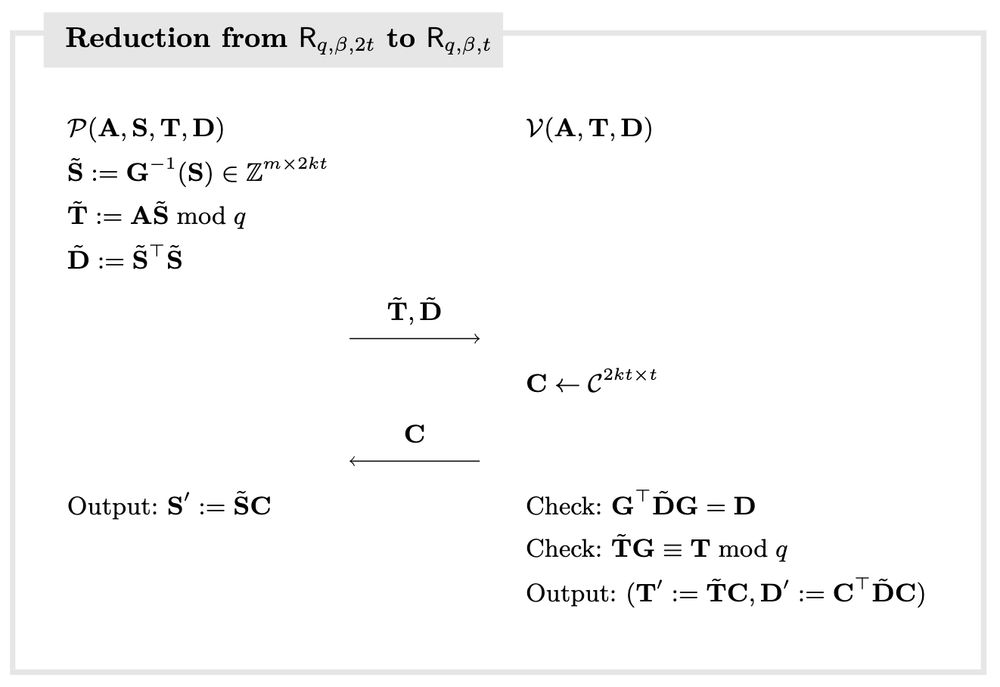Taking privacy-enhancing crypto (mainly zkSNARKs & FHE) from theory to practice, and back.
🇨🇭🇫🇷 🏳️🌈
I’ll also make the code open-source soon™, along with a lot more lattice implementations. Stay tuned! (8/8)

I’ll also make the code open-source soon™, along with a lot more lattice implementations. Stay tuned! (8/8)
Lova is very algebraic but uses plain SIS, Latticefold uses MSIS but relies on sumcheck, which is a powerful tool (too powerful?). Can we get a scheme that uses MSIS and barely does more than a single random linear combination? (7/8)
Lova is very algebraic but uses plain SIS, Latticefold uses MSIS but relies on sumcheck, which is a powerful tool (too powerful?). Can we get a scheme that uses MSIS and barely does more than a single random linear combination? (7/8)
In a concurrent work, @danboneh
and @charles_chen533
build a lattice folding scheme from MSIS. It's not implemented yet, but we can expect Latticefold to be more concretely efficient. We’ll have to see how they compare on recursion-friendliness. (6/8)
In a concurrent work, @danboneh
and @charles_chen533
build a lattice folding scheme from MSIS. It's not implemented yet, but we can expect Latticefold to be more concretely efficient. We’ll have to see how they compare on recursion-friendliness. (6/8)
Lova has some nice features: it is very algebraic (great for prover parallelism!) and only requires a single challenge matrix, which makes it recursion-friendly. We also use the modulus q=2^64 and get rid of modular reduction. (4/8)
Lova has some nice features: it is very algebraic (great for prover parallelism!) and only requires a single challenge matrix, which makes it recursion-friendly. We also use the modulus q=2^64 and get rid of modular reduction. (4/8)


